You can listen to Hoosier History Live! live on the air each Saturday, or listen online at the WICR website during the broadcast on any computer with speakers, anywhere, or on a smartphone. We invite you to visit our website!
Jan. 28 show
Rev. Jim Jones and Indiana connections
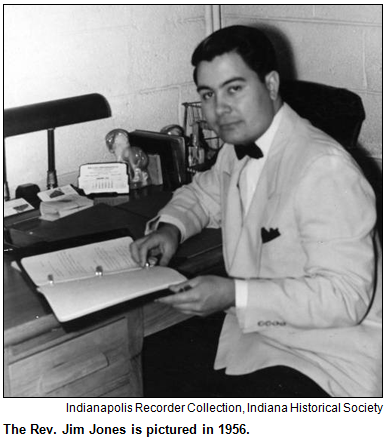 In the final portion of his life, Rev. Jim Jones was associated with Guyana, where more than 900 of his followers participated in a mass murder-suicide that shocked the world in 1978, and California, where his transplanted church, which he called the Peoples Temple, was based for several years.
In the final portion of his life, Rev. Jim Jones was associated with Guyana, where more than 900 of his followers participated in a mass murder-suicide that shocked the world in 1978, and California, where his transplanted church, which he called the Peoples Temple, was based for several years.
This 10 minute KPBS video about Jim Jones includes great shots of his preaching and interviews with former cult members.
The notorious spiritual leader, though, began life and launched his church in Indiana.
To explore and explain Jones' links to Indiana, Rachael Heger of the Indiana State Library will join Nelson in studio. Rachael, the Indiana division supervisor at the state library, has researched and gives presentations about the Hoosier chapters in the life of Jim Jones, who was born in the Randolph County town of Lynn in far-eastern Indiana in 1931.
After graduating from Richmond High School in 1948, Jones attended Indiana and Butler universities. He moved to Indianapolis in the 1950s and eventually launched his church, which had various locations. 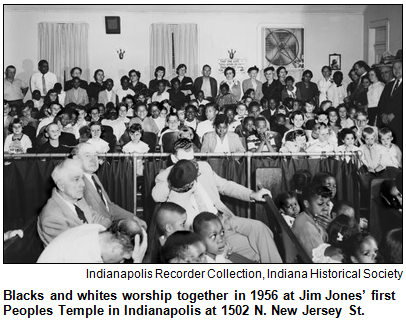 They included a building at 10th and Delaware streets and, before that, at 15th and New Jersey.
They included a building at 10th and Delaware streets and, before that, at 15th and New Jersey.
As Rachael notes in her talks, he sold monkeys to raise funds for his church. According to several accounts, the monkeys were imported from India and South America. Jones sold the monkeys door-to-door to Hoosiers. He also took out ads in local newspapers.
While living in Indiana, Jim Jones and his wife adopted several children of various races.
"He called this his 'Rainbow Family,'" Rachael notes.
Some of the children were of Korean-American ancestry, and others were Native American. In 1961, Jones and his wife became the first white couple in Indiana to adopt a black child, according to Rachael's research.
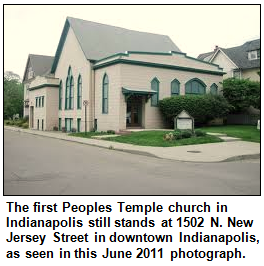 In the Hoosier capital, Jones started soup kitchens, took pride in the racial diversity of his congregations and was appointed in 1961 by then-Mayor Charles Boswell to the Indianapolis Human Rights Commission.
In the Hoosier capital, Jones started soup kitchens, took pride in the racial diversity of his congregations and was appointed in 1961 by then-Mayor Charles Boswell to the Indianapolis Human Rights Commission.
Amid increasing local skepticism as he characterized himself as a "prophet," Jones left Indiana in 1965 and urged hundreds of his followers to resettle in California with him. He briefly returned in 1971 to conduct a "healing crusade."
According to the Encyclopedia of Indianapolis, his Indianapolis years were both praised (for his civil rights and social work) and criticized because some people began to regard him as "an unbalanced, power-hungry fanatic." 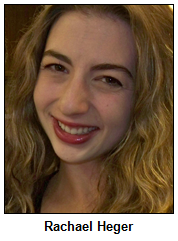 Reports surfaced about mass hypnosis and inauthentic healings.
Reports surfaced about mass hypnosis and inauthentic healings.
During the early 1970s, Jones established multiple congregations in California and, in Guyana, founded Jonestown, a communal outpost. That's where more than 900 followers were urged by Jones in November 1978 to drink cyanide-laced Kool-Aid in a mass suicide. (Authorities eventually discovered the corpse of Jones, who died of a gunshot wound that was determined to be self-inflicted.)
Earlier on the day of the mass suicides, a U.S. congressman from California and several reporters were murdered in Guyana after they arrived to investigate Jones' activities.
Journalists from Indiana also had been raising warning signs about Jones for several years. Carolyn Pickering, an investigative reporter for the Indianapolis Star who died in 2010, earned national recognition for being among the first in the country to expose "cult" aspects of Jones' sermons.
In 1972, after Jones had decamped to California, Pickering (who later was inducted into the Indiana Journalism Hall of Fame) contacted San Francisco sources for information about his transplanted church. 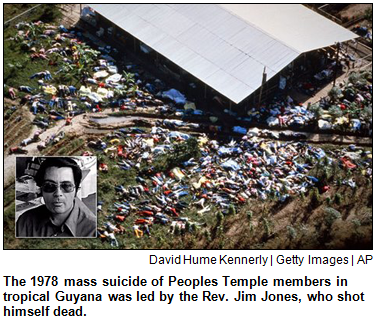 That sparked an in-depth investigation by the San Francisco Examiner of Peoples Temple activities.
That sparked an in-depth investigation by the San Francisco Examiner of Peoples Temple activities.
Rachael, our guest, specializes in researching 20th-century history in Indianapolis, as well as business and women's history. Her presentations about the Hoosier years of Rev. Jim Jones are part of a series in which the state library responds to frequently asked questions from the public.
Nelson, our host, also has a connection to the Jonestown aftermath. As a rookie reporter in 1982, four years after the Guyana tragedy, Nelson earned one of his first front-page bylines by breaking the story of a 79-year-old Indianapolis native who survived the Guyana tragedy by sleeping in her cottage rather than attending the "suicide" ceremony.
A 21-year adherent of Jones since his days in Indy, Hyacinth Thrash had begun boycotting his worship sessions because of their increasingly bizarre nature. Mrs. Thrash woke up to find herself in the midst of more than 900 corpses and waited alone for 12 hours until authorities arrived at the compound.
 She is believed to be the only person to live through the night of Nov. 18, 1978, while remaining on the premises. (A few other survivors escaped by hiding in a nearby jungle instead of drinking the poisoned Kool-Aid.) Mrs. Thrash's story also is recounted in a book by Indianapolis author Marian Towne, The Onliest One Alive.
She is believed to be the only person to live through the night of Nov. 18, 1978, while remaining on the premises. (A few other survivors escaped by hiding in a nearby jungle instead of drinking the poisoned Kool-Aid.) Mrs. Thrash's story also is recounted in a book by Indianapolis author Marian Towne, The Onliest One Alive.
History Mystery
In the mid-1950s, Rev. Jim Jones organized large religious conventions at a massive building in downtown Indianapolis.
The building, at the corner of Ohio and New Jersey streets, was a city landmark for more than 45 years. A Spanish-style convention center and revival house with a whitewashed façade, the building was the setting for a wide variety of public events, including teacher conventions, religious revivals, political rallies and dance marathons.
Built in 1921, the building had a seating capacity of 10,000 and a choir loft that accommodated 1,500 more. For many years, choir performances were broadcast on national radio from the building, which was one of the few structures in downtown Indy then that could accommodate major events. The building was demolished in the late 1960s.
Question: Name the bygone building.
To win the prize, you must call in with the correct answer during the live show. Please do not call if you have won a prize from any WICR show during the last two months. The call-in number is (317) 788-3314, and please do not call until you hear Nelson pose the question on the air.
The prize is a pair of tickets to the Indianapolis Symphony Orchestra. This prize is courtesy of the ICVA.
Roadtrip: Super Biz Bowl on Feb. 1
Roadtripper Chris Gahl of the ICVA is working non-stop through Super Bowl weekend, so this Saturday, longtime downtown Indy resident Garry Chilluffo of Chilluffo Photography will be filling in. Garry suggests that all of us "locals" come down to the Super Biz Bowl at Super Bowl Village on Wednesday, Feb. 1, from 3 to 10 p.m., where the party will include - well, all of it!
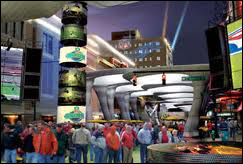 Scavenger hunts, "Fire and Ice" Lounges, free concerts on two stages, "Super Dash" - which is described as a sort of "human gerbil ball" competition - zip-line rides and The Huddle at Circle Centre mall in the space previously occupied by Nordstrom.
Scavenger hunts, "Fire and Ice" Lounges, free concerts on two stages, "Super Dash" - which is described as a sort of "human gerbil ball" competition - zip-line rides and The Huddle at Circle Centre mall in the space previously occupied by Nordstrom.
Getting in and out of downtown? A Super Bowl Village map is available. Also in the mix is the Super Bowl Park and ride service, as well as general "Know Before You Go information.
Don't want to plan ahead and pay only $1.75 each way? Create your own "park and ride" trip with IndyGo. For example, if you live on the north side of Indianapolis, park somewhere along North Meridian Street and take a regularly scheduled IndyGo bus - the 18, 38, or 39 - into downtown. The schedule remains the same through Super Bowl, and the last 39 bus leaves Ohio Street and Capitol Avenue at 11:45 p.m. and heads north on Meridian, back to your parked car.
RSVP today!
Feb. 16 is our fourth-anniversary party
Can you believe it? Hoosier History Live! has been on the air for four years! We are proud to have become a unique asset to the state of Indiana, producing original content every week that is then added to our growing online archive. Thanks to all who have listened, clicked, browsed and supported the show!
 We plan to be around quite awhile longer, contributing to Indiana's culture and offering a well-reported take on our state's rich and varied history.
We plan to be around quite awhile longer, contributing to Indiana's culture and offering a well-reported take on our state's rich and varied history.
Come join in the festivities as we celebrate four years on the air at the Morris-Butler House, 1204 N. Park Ave. in Indianapolis, on Thursday, Feb. 16 from 5 to 8 p.m.
Wine, soft drinks and appetizers will be served. Generously hosted by Indiana Landmarks, this is a free event; however, checks (payable to Indiana Humanities, with a memo line "for Hoosier History Live!") are graciously accepted!
You can click here to RSVP, or send an email to molly@hoosierhistorylive.org.
Your Hoosier History Live! team,
Nelson Price, host and creative director
Molly Head, producer, (317) 927-9101
Chris Gahl, Roadtripper
Richard Sullivan, webmaster and tech director
Pam Fraizer, graphic designer
Garry Chilluffo, creative consultant
Michele Goodrich, Jed Duvall, grant consultants
Joan Hostetler, photo historian
Dana Waddell, volunteer-at-large
www.hoosierhistorylive.org

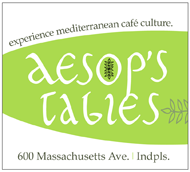



Please tell our sponsors that you appreciate their support: Aesop's Tables, Indiana Historical Society, Indiana Landmarks, Lucas Oil and Story Inn.
 Acknowledgments to Print Resources, Indianapolis Marion County Public Library, Monomedia, Indiana Humanities, Indianapolis Convention & Visitors Association, WICR-FM, Fraizer Designs, Heritage Photo and Research Services, Derrick Lowhorn, Samantha Stratton and many other individuals and organizations. We are an independently produced program and are self-supporting through organizational sponsorships, grants and through individual tax-deductible contributions through the Indiana Humanities Council. Visit our website to learn how you can support us financially.
Acknowledgments to Print Resources, Indianapolis Marion County Public Library, Monomedia, Indiana Humanities, Indianapolis Convention & Visitors Association, WICR-FM, Fraizer Designs, Heritage Photo and Research Services, Derrick Lowhorn, Samantha Stratton and many other individuals and organizations. We are an independently produced program and are self-supporting through organizational sponsorships, grants and through individual tax-deductible contributions through the Indiana Humanities Council. Visit our website to learn how you can support us financially.
Feb. 4 show
Sports team loyalties across Indiana
 During Super Bowl weekend in Indy, what better time to tackle the heritage of sports fans across the Hoosier state?
During Super Bowl weekend in Indy, what better time to tackle the heritage of sports fans across the Hoosier state?
Beloved as the Indianapolis Colts have become in their hometown, do you recall that several years after their arrival in 1984 the Hoosier capital remained packed with Chicago Bears fans?
In baseball, many analysts contend that generations of central Indiana residents have been about evenly divided between Chicago Cubs and Cincinnati Reds enthusiasts. (Pardon us as we hustle back to football for a sec to observe that the Cincinnati Bengals never seemed to catch fire in Central Indiana.)
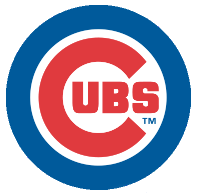 In Evansville and other areas of southwestern Indiana, the allegiance of many baseball fans is to the St. Louis Cardinals. In Lake County and elsewhere in northwestern Indiana, of course, the Bears, Bulls, Cubs, White Sox and other Chicago-based teams enjoy passionate support.
In Evansville and other areas of southwestern Indiana, the allegiance of many baseball fans is to the St. Louis Cardinals. In Lake County and elsewhere in northwestern Indiana, of course, the Bears, Bulls, Cubs, White Sox and other Chicago-based teams enjoy passionate support.
To explore sports team loyalties across Indiana - and across several sports, including football, basketball and baseball - Nelson will be joined in studio by two veteran Indianapolis-based sports marketers with media backgrounds.
 Pete Cava, who has served in top posts with USA Track & Field and the Amateur Athletics Union, is the author of Tales From the Cubs Dugout and Mom's Handy Book of Backyard Games.
Pete Cava, who has served in top posts with USA Track & Field and the Amateur Athletics Union, is the author of Tales From the Cubs Dugout and Mom's Handy Book of Backyard Games.
David Morton is a principal of Sunrise Sports Groups, sports marketing consultants that specialize in athlete management, media relations, sponsorship sales and other sports-related services. On the eve of the big game at Lucas Oil Stadium, Pete, David and Nelson will delve into regional loyalties across Indiana and how some have shifted, while others remain as rock-solid as a defensive lineman.
© 2012 Hoosier History Live! All rights reserved.